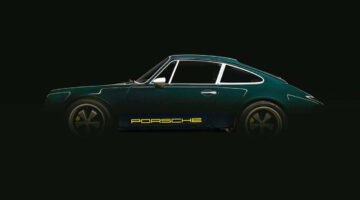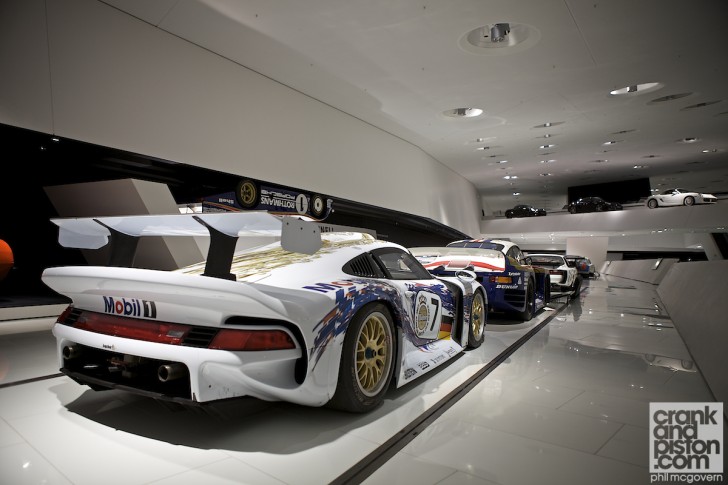
After pouring over the Dakar 911, I’m gently tugged back into line and thrown in front of the Porsche 911 GT1 from 1996. In typical Porsche fashion, the GT1 was decided upon, developed and out on track to tackle the GT1 entry list at Le Mans in just nine months. Domination of its class followed, with the overall victory at Le Mans snatched away from the team due to major sections of the bodywork having to be replaced in the closing stages of the race. Sad for the car, good for the brand however, as a Porsche WSC Spyder took overall victory that year.
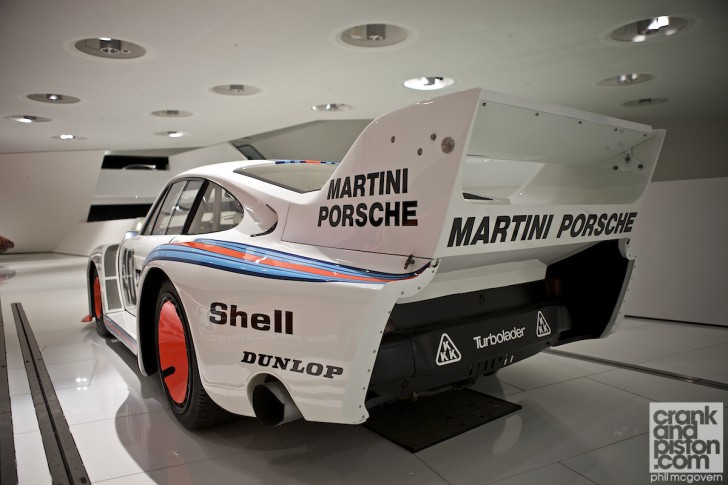
Modern cars: done. Back to the cars that really captivated me as a kid and what could be more impressive than the rear view of the mighty Porsche 935 ‘baby’? Developed from the 935, again in a crazy quick time of just three months, this ‘baby’ variant was pulled together to use in the 2.0 class of the German Racing Championship. With the engine reduced in size and the blowers working their best, Jacky Ickx proved that Porsche could cut it wherever it placed its hat. Another trophy added to the 30,000-strong cabinet after a race win at Hockenheim was testament to the engineering success.
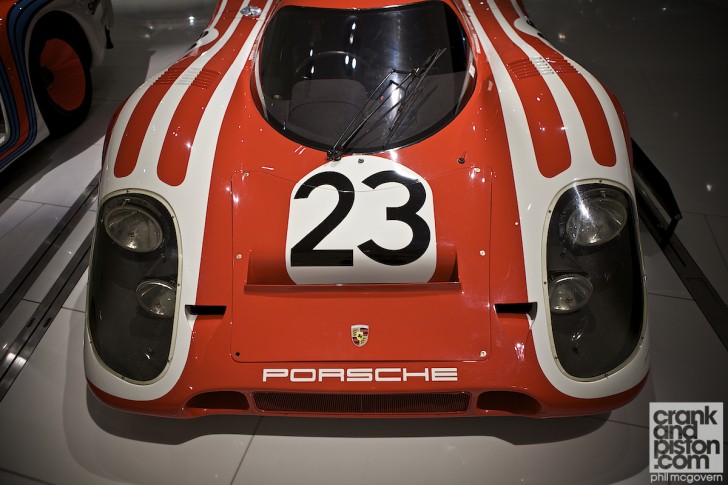
On to a car that Norbert is very proud of. What can we really say about the Porsche 917 KH Coupe that hasn’t been said before? How about highlighting the fact that the famous Gulf liveried car was never successful at Le Mans? Strange to think with the car being etched in so many peoples’ minds, that it was in fact this car (driven by Hans Hermann and Richard Attwood) that took the chequered flag at the end of a rain and fog effected race in 1970. In my world it’s far better looking than the Gulf car and bizarrely, for those that haven’t had the pleasure of a close encounter, absolutely tiny!
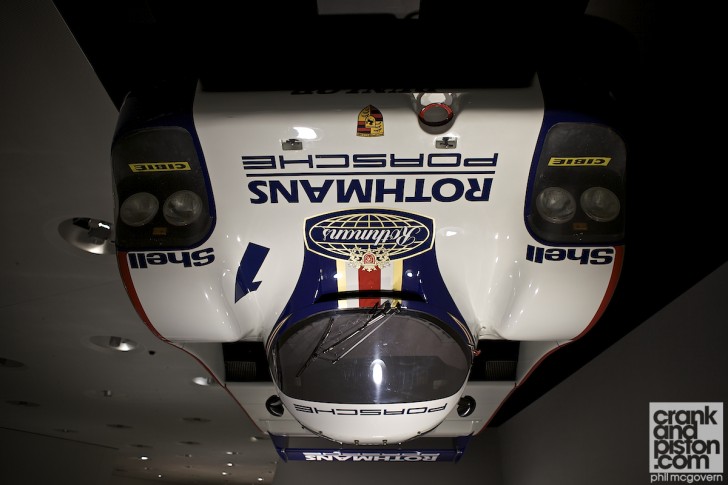
The theory of downforce (F = ? : 2 .v2 . A . ca) – At 321.4kmh the Porsche 962 could theoretically drive on the ceiling. Norbert was very strong in persuading me that it would happen and why would I disagree?
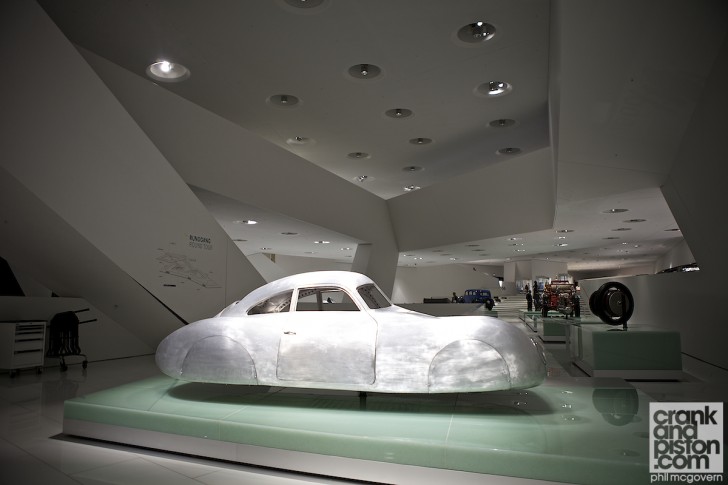
Could this be the forefather to all Porsches? Type 64, designed and created by Professor Ferdinand Porsche for the Berlin-Rome long distance race. A car that become an utter flight of passion for the Professor clearly shows the shape that we have all become so accustomed to. Even with the very nominally powered engine out back, the car would happily reach speeds of 130kph on the open roads. After the war, this car was the first to carry the Porsche name, signalling the beginning of history as we know it.
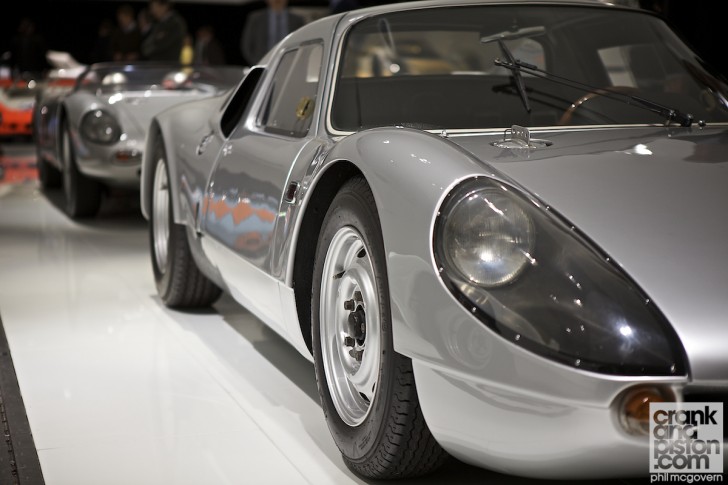
A personal favourite of mine is the gorgeous Porsche 904. Developed by Ferdinand Alexander Porsche, the 904 was the first Porsche built from fibreglass. In typically clever fashion (a theme here), the GT model was able to run with a number of differing engine configurations, enabling it to compete across many races and disciplines. With a rapid development program, the Porsche went from its first public appearance to a win at the Targa Florio in just five months. Wins at the 24 Hours of Le Mans and the Monte Carlo Rally assured the 904 legendary status.
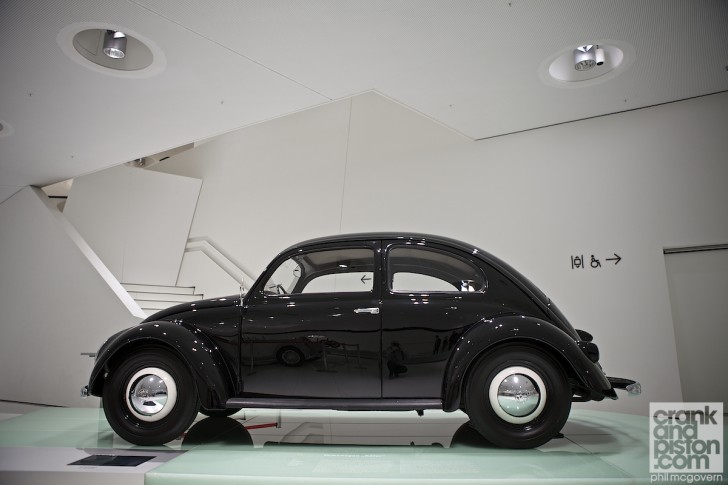
Ah yes, the Volkswagen Kafer. The German People’s Car was presented to you know who and benefited from all that Ferdinand Porsche knew at the time. Air-cooled motor out back, torsion bar suspension, and aerodynamic outer bodyshell and the famed flat floorpan. Years later and over 22 millions units sold highlight the success of bullet-proof engineering and simplicity.
– FULL GALLERY OF PORSCHE MUSEUM SHOTS AVAILABLE HERE – CLICK –
NEXT PAGE


